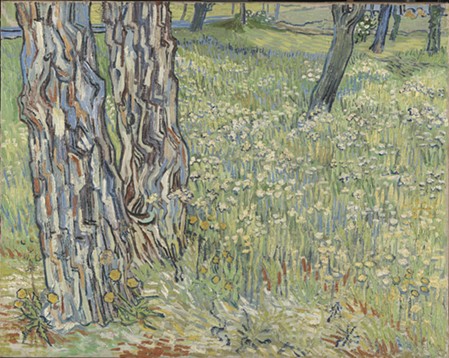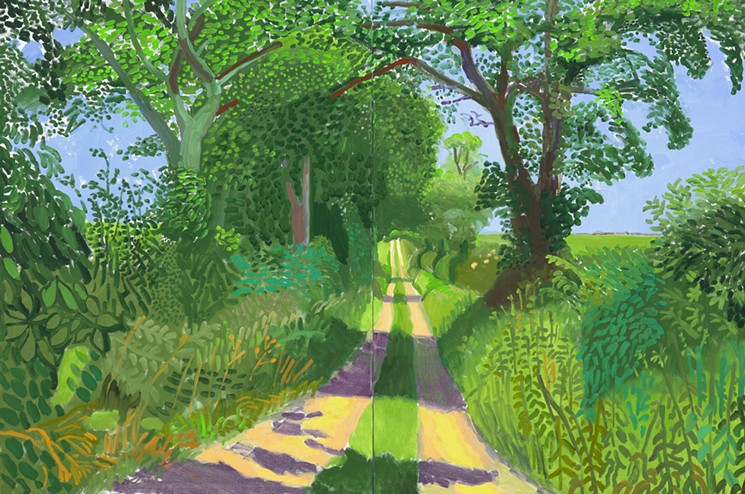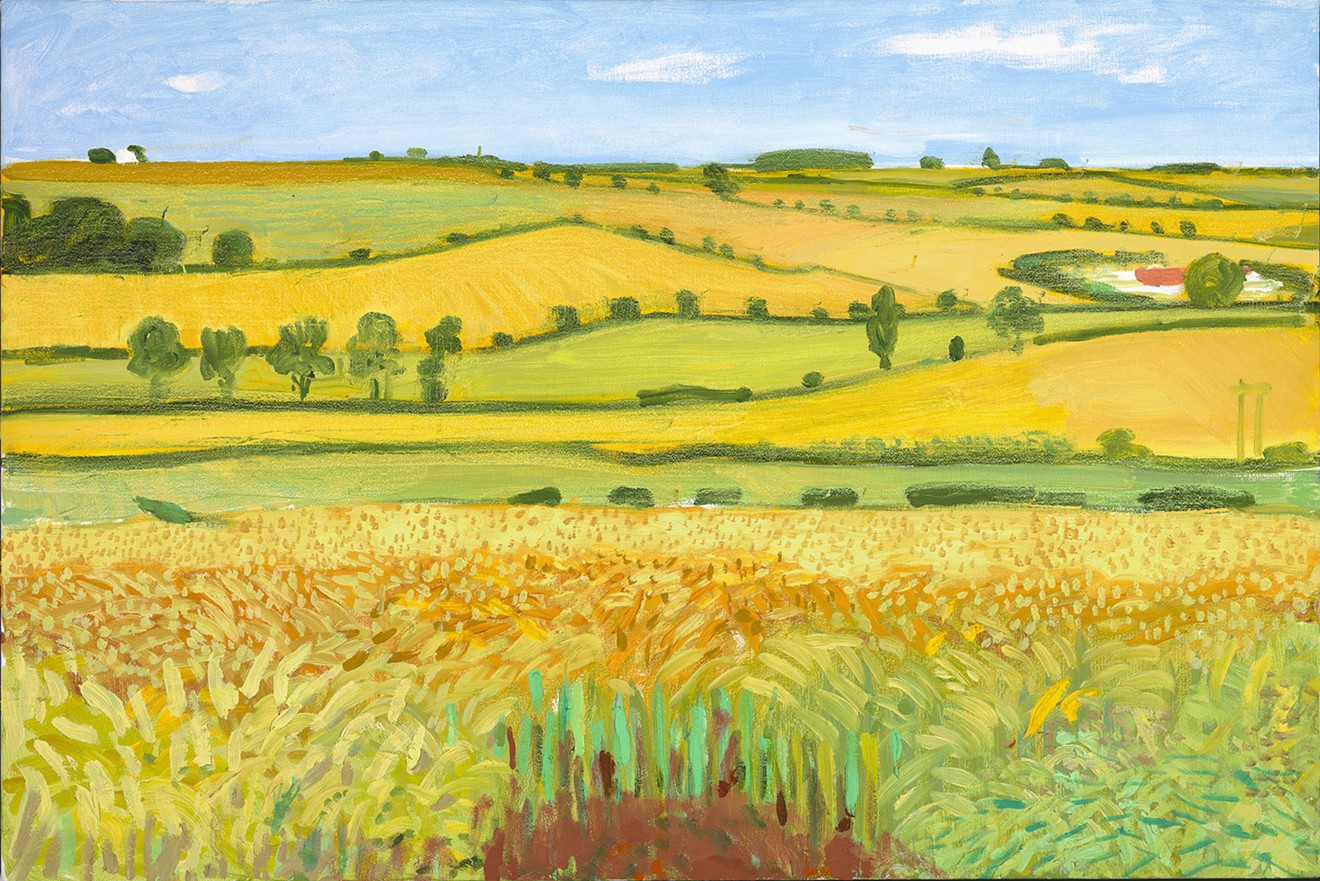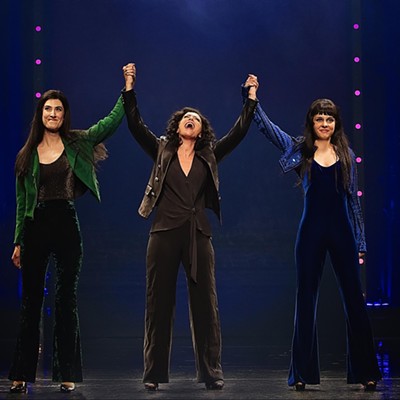Hockney traces that fascination back to 1955. While a student at the Bradford College of Art at West Yorkshire in the UK, he attended a Van Gogh exhibit at the Manchester City Art Gallery. There, the teen thought the Dutch artist must have been “rich” due to the amount of blue (a fairly expensive paint color) that he used. Though of course, Van Gogh was anything but well-off.

"Tree Trunks in the Grass" by Vincent Van Gogh, 1890, oil on canvas.
Photo by the Kröller-Mu?ller Museum, Otterlo, the Netherlands/Courtesy of the Museum of Fine Arts, Houston
It premiered at Amsterdam’s Van Gogh Museum—which initiated the pairing—in 2019. The MFAH stop includes 46 works by Hockney in variety of mediums (including paintings, sketches, iPad art, and videos), a photo portrait of him, and 10 paintings and sketches from Van Gogh. All have the subjects of landscapes in common.
“Hockney admired Van Gogh’s work very much and had talked about it quite a bit, so there is a genuine relationship,” says Ann Dumas, consulting curator of European art for the MFAH. “The two things that really bring the artists together are that they both really responded deeply to the beauties of the natural world, and wanted to express this with great directness in their art.”
Many of the landscapes show both artists’ prominent use of bold color, perspective, and a “subjective romanticism.” According to Hans den Hartog Jager in the exhibit’s catalog, the pair share “a profound desire to create new space. New light. A fresh, intense way of seeing a world that otherwise seems so familiar.”
Dumas concurs, even though it may seem on the surface that Van Gogh’s colors are much more muted than Hockney’s trademark bright, almost fluorescent tones. “Hockney had access to bright colors and pigments that Van Gogh did not. But in the context of the time at the end of the 19th century, Van Gogh was [considered] a bold colorist,” she offers. And both of their drawings have much in common with their marks, dots, and dashes capturing the texture of nature.
While the popular image of Van Gogh painting outdoors in woods and fields is ingrained in the psyches of even casual admirers, Hockney is known more for his pop art, portraiture, and “Pool/Swimming Series” done from his home in Los Angeles, where he moved permanently in the mid-1960s. He did showcase nature in his “Canyon Series.” But in the 1990s, he began making more trips back to Yorkshire due to his mother’s ill health. It was there that Dumas says he “rediscovered” the landscape surroundings of his youth.

Photo by Richard Schmidt, © David Hockney/Courtesy of the Museum of Fine Arts, Houston.
"Early July Tunnel" by David Hockney, 2006, oil on canvas.
As to her own favorite work from each artist in the exhibit—as an art lover and not a curator—Dumas points to Van Gogh’s Tree Trunks in the Grass (1890) and Hockney’s Under the Trees, Bigger (2010-11). "Bigger" is a key word, as exhibit goers will see Hockney's familiar huge canvases often dwarf Van Gogh's in terms of size.
In this century, the now 83-year-old Hockney also became fascinated with the use of technology in creating art. A video piece in the exhibit titled The Four Seasons features four walls (each representing a season), and each wall consisting of nine screens. It shows video that Hockney shot from nine cameras mounted on his car as he drove through Yorkshire during different times of the year.
Finally, the exhibit features some of Hockney’s artwork he created on a thoroughly modern device, the iPad. And while that’s one artistic medium he and Van Gogh could not have in common, Dumas says that's only due to the limitations of the time Van Gogh lived in.
“Hockney said something rather charming. Van Gogh wrote all the time to his brother Theo and explained what he was working on as Theo tried to sell his brother’s work. Van Gogh would often do little sketches in his letters to give Theo an idea of what it was like,” she says. “With Hockney’s iPad work, he would often email it to friends. And he said that if Van Gogh had an iPad, he’d definitely be emailing his drawings to Theo!”
Hockney-Van Gogh: The Joy of Nature runs February 19-June 20 at the Museum of Fine Arts, Houston’s Audrey Jones Beck Building, 5601 Main. For information, call 713-639-7300 or visit MFAH.org. Ticket prices vary.







